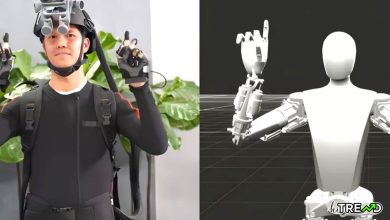
Something to look forward to: Unlike Nvidia’s DLSS and Intel’s XeSS, AMD’s FSR upscaling technology does not rely on AI or machine learning. Instead, it uses a combination of spatial and temporal upscaling, anti-aliasing, and other techniques to enhance image quality from lower-resolution inputs. While AMD’s solution supports a wider range of hardware than its competitors, it typically delivers lower image quality. However, AMD has now confirmed that it is moving forward and has been working toward incorporating AI for some time. AMD FSR 4 will transition to pure AI upscaling, following DLSS and XeSS
Jack Huynh, senior vice president of AMD’s
Computing and Graphics Business Group, recently announced that FidelityFX Super Resolution 4.0 (FSR 4) will use AI. This marks a significant departure from previous versions but potentially opens more questions than the confirmation answers.
Competing upscaling solutions like Nvidia DLSS and Intel XeSS use AI and machine learning to upscale images while minimizing performance impact, though they require specialized hardware not found in game consoles or older GPUs.
In contrast, the latest version of FSR, FSR 3.1, uses spatial and temporal techniques for upscaling and frame generation. It works on nearly any device, but benchmarks show it produces less stable images compared to AI-driven solutions.
You can read more Technology articles
Sony’s introduction of AI-based PlayStation
Spectral Super Resolution as a key feature of the PlayStation 5 Pro signals a broader industry shift toward AI upscaling – not to mention, the console is based on AMD’s graphics tech. Additionally, the upcoming successor to the Nintendo Switch is expected to support DLSS.
At IFA 2024, Huynh explained that AMD had focused on analytical and filter-based techniques with FSR 2 and 3 to accelerate development, but an AI-based solution has been in the works for around a year.
Interestingly, Huynh’s comments on FSR 4 centered around maximizing battery life on handheld gaming PCs through frame generation. The timing suggests that FSR 4 might be optimized for the AMD Z2 Extreme mobile processor, which the company plans to release early next year. The SoC’s next-generation NPU could be the cornerstone of AMD’s AI upscaling technology. AMD FSR 4 will transition to pure AI upscaling, following DLSS and XeSS

Huynh did not mention whether FSR 4 would be available on more traditional products like RDNA 4 graphics cards, which are expected to debut in 2025 (though it would only make sense for that to be the case). It also remains unclear whether older AMD GPUs will support the new upscaling technology.
While AMD typically allows its software to work across a wider range of hardware, including competitors’ devices, all AI-based upscaling solutions so far have required some form of dedicated hardware.
Follow HiTrend on X





